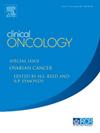胶质母细胞瘤发生和耐药过程中三维染色质空间组织的改变:分子机制、临床意义和治疗前景的最新进展
IF 3
3区 医学
Q2 ONCOLOGY
引用次数: 0
摘要
胶质母细胞瘤(GBM)仍然是最具侵袭性和致死性的脑癌之一,具有深刻的遗传、表观遗传和表型异质性。高分辨率基因组图谱的最新进展揭示了三维(3D)染色质结构——包括染色质环、拓扑相关结构域和增强子-启动子相互作用——在驱动GBM肿瘤发生和治疗耐药性中的关键作用。这篇综述总结了最近关于三维基因组重组在维持致癌转录程序、促进肿瘤内异质性和促进适应性抵抗方面的机制贡献的见解。我们将分子发现与临床和治疗观点结合起来,强调表观遗传药物靶向疾病相关染色质结构的潜力。最后,我们强调了利用染色质构象数据进行GBM精确肿瘤学的未解决问题和未来方向。本文章由计算机程序翻译,如有差异,请以英文原文为准。
Alterations in 3D Chromatin Spatial Organisation in Tumourigenesis and Therapy Resistance of Glioblastoma: The Recent Advances in Understanding Molecular Mechanisms, Clinical Implications, and Therapeutic Perspectives
Glioblastoma (GBM) remains one of the most aggressive and lethal forms of brain cancer, characterised by profound genetic, epigenetic, and phenotypic heterogeneity. Recent advancements in high-resolution genome mapping have unveiled the critical role of three-dimensional (3D) chromatin architecture—encompassing chromatin loops, topologically associating domains, and enhancer–promoter interactions—in driving GBM tumourigenesis and therapy resistance. This review summarises recent insights into the mechanistic contribution of 3D genome reorganisation in sustaining oncogenic transcriptional programs, promoting intratumoural heterogeneity, and facilitating adaptive resistance. We integrate molecular discoveries with clinical and therapeutic perspectives, emphasising the potential of epigenetic drugs to target disease-associated chromatin structures. Finally, we highlight unresolved questions and future directions in leveraging chromatin conformation data for precision oncology in GBM.
求助全文
通过发布文献求助,成功后即可免费获取论文全文。
去求助
来源期刊

Clinical oncology
医学-肿瘤学
CiteScore
5.20
自引率
8.80%
发文量
332
审稿时长
40 days
期刊介绍:
Clinical Oncology is an International cancer journal covering all aspects of the clinical management of cancer patients, reflecting a multidisciplinary approach to therapy. Papers, editorials and reviews are published on all types of malignant disease embracing, pathology, diagnosis and treatment, including radiotherapy, chemotherapy, surgery, combined modality treatment and palliative care. Research and review papers covering epidemiology, radiobiology, radiation physics, tumour biology, and immunology are also published, together with letters to the editor, case reports and book reviews.
 求助内容:
求助内容: 应助结果提醒方式:
应助结果提醒方式:


